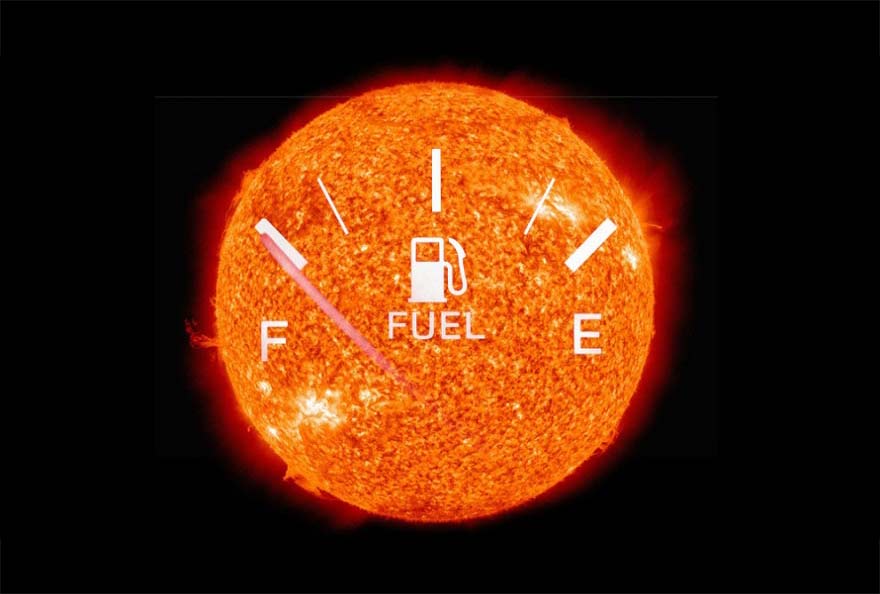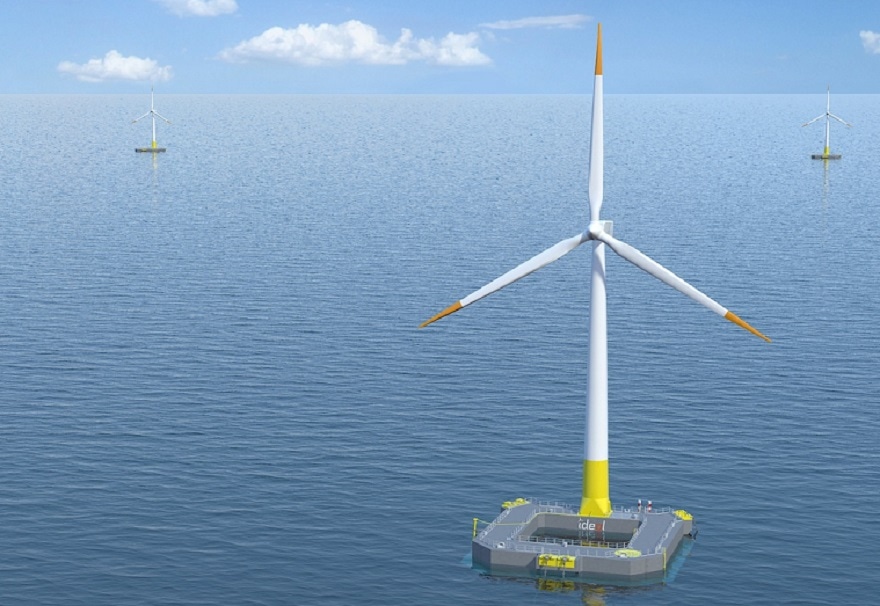Published on September 18 in the very serious journal "Geosciences", under the title, "The carbon budget and the trajectory to limit global warming to 1.5 degrees", an international study deserves our full attention. According to this work, led by Professors Richard Millar (Oxford University), Jan S. Fuglestvedt (International Climate and Environmental Research Centre in Oslo) and Michael Grubb, from the University College London, it is still possible to limit the global temperature increase to 1.5°C, as recommended by the Paris Agreements. (1).
Thile this international team stresses that it is still possible to achieve the objective of limiting the rise in temperature to 1.5°C, it immediately adds that, to achieve this objective, we will have to reduce our CO2 emissions at a much greater rate than that envisaged by the Paris Agreements.
The study points out that since pre-industrial times, the average temperature of the Earth has already risen by 0.94°C. According to this work, the total "carbon budget" of humanity that must not be exceeded in order to remain within the limits of this one and a half degree of global warming would be a little higher than expected, in the order of 880 gigatons of CO2 from 2015 onwards. According to Richard Millar, a researcher at Oxford University and the main author of this study, "Limiting CO2 emissions to below 880 gigatonnes from 2015, equivalent to 20 years of CO2 emissions at current levels, would probably make it possible to achieve the Paris objective of limiting warming to 1.5°C".
However, in order to massively decarbonise the world economy, and in particular energy production (which will still be two-thirds fossil fuel-based in 2040 according to recent prospective studies), the rise of renewable energies and the expected doubling of energy efficiency will not be enough. Powerful CO2 capture and storage (CCS) technologies will also have to be implemented on an industrial scale, initially at source, before being supplemented by technologies that are still being tested and should make it possible to extract CO2 directly from the atmosphere in a few years' time.
The Gassnova research project in Norway recently showed that, contrary to popular belief, CO2 capture and storage could be economically viable. The project aims to capture CO2 emitted by a cement plant, a waste incineration site and a fertiliser production plant and transport it by ship to the south coast of England where it is to be buried under the seabed from 2020 onwards.
But could not this CO2 recovered from the air, thanks to various complementary technologies, instead of being exclusively destined to be buried underground or under the sea, be recycled, transformed and finally reused to produce chemicals with high added value, and why not fuels, which would then become "neutral" in the carbon balance, since they would be derived from the CO2 they themselves emitted during their use.
For the past ten years or so, several research teams around the world have been working on this idea, which continues to progress. Since 2005, Professor Jacob Karni of the Weizmann Institute in Rehovot has been working to develop a process that transforms CO2 into "syngas" or synthetic gas.
This technology, currently being industrialised by the company NewCO2Fuel, consists of injecting water and CO2 at high temperature (900 degrees) through a membrane, powered by an electric current. This process then transforms the CO2 into syngas (a synthetic gas made up of carbon and hydrogen) which can be used to obtain synthetic gas oil or produce electricity.
The beauty of this process, which is now well mastered and should be industrialized as early as next year, is that it is self-sufficient in energy. Indeed, it allows CO2 and water to be transformed into fuel, using only the energy lost by the plant and solar energy.
In France, Gilles Flamant's team (CNRS), working at the Odeillo solar furnace site, showed in 2008 that it was possible to produce, using concentrated solar energy, carbon dioxide and hydrogen on the one hand, and carbon monoxide and hydrogen on the other, which can be transformed into long-chain hydrocarbons that can be used in today's engines.
Even if, for the moment, the production of this "solar hydrogen" is more expensive than the traditional production process, the continuous fall in concentrator prices could make it competitive within 5 years.
In Germany, Audi researchers, in collaboration with Sunfire, a specialist in the manufacture of fuel wire, developed a process in 2015 that makes e-diesel possible and requires only water and carbon dioxide as basic raw materials. This German technology uses electricity exclusively from renewable energies - wind, solar, or hydroelectric - to produce hydrogen (H2) by electrolysis at high temperature (800°C). The hydrogen is then mixed with carbon dioxide (CO2) supplied by a biogas production unit. This mixture of carbon dioxide and hydrogen is then used to obtain carbon monoxide (CO), hydrogen and water, elements that enable the production of a synthetic oil that only needs to be refined to become an excellent quality e-diesel, fully compatible with today's engines.
At the end of 2016, American researchers at the Oak Ridge National Laboratory (ORNL), led by chemist Daniel Nocera, discovered a promising electrochemical reaction that converts carbon dioxide (CO2) into ethanol with a yield of around 60 %. The key to this astonishing process, which starts with a voltage of just 1.2 V, lies in a new catalyst consisting of copper nanoparticles embedded in carbon peaks. This simple and inexpensive process could be used on a large scale in fossil fuel power plants and could also become a remarkable tool for massive energy storage, by transforming part of the peak production from solar and wind energy into ethanol.
In July 2016, researchers from the Paul Scherrer Institute PSI and ETH Zurich presented a chemical process for using the sun's thermal energy to produce high-energy fuels - methane, petrol and diesel - which can be used directly, but also stored in tanks or injected into the gas grid. This process is based on the use of a combination of materials, based on cerium oxide and rhodium. It therefore makes it possible to store solar energy in chemical form, without using the heavy and complex Fischer-Tropsch process, which represents a major technological breakthrough.
Finally, a few weeks ago, a team of researchers from the Laboratory of Molecular Electrochemistry (University Paris Diderot/CNRS), led by Marc Robert and Julien Bonin, presented a process capable of transforming carbon dioxide into methane, directly usable for heating or transport applications, using sunlight and an iron-based molecular catalyst. These results open a new path towards the production of "solar fuel" and the recycling of CO2 (See CNRS).
Technically, this process involves replacing the oxygen atoms in carbon dioxide with hydrogen atoms. This is achieved by adding small amounts of alcohol to provide the necessary protons. But to trigger this reaction, a sufficient energy source is of course required. In this case it is solar radiation produced by a solar simulator and a filter that selects wavelengths above 400 nm.
This technological breakthrough is all the more remarkable because, unlike almost all known catalysts, which use rare and precious metals, the two researchers have developed a catalyst based on iron, a metal that is abundant, accessible and inexpensive. Although other iron-based catalysts had already been tested, none had been able to go beyond carbon monoxide and ultimately produce methane. The originality of this catalyst developed by these CNRS researchers lies in the fact that it has properties inspired by those of porphyrins, molecules that transport dioxide in the blood.
In addition, this process operates at ambient pressure and temperature and needs only the sun as its sole energy source. This fine French discovery therefore demonstrates that it is possible to store renewable solar energy in different types of compounds and fuels that are compatible with existing industrial infrastructures and energy networks.
In concrete terms, it is becoming possible to use this process to obtain formic acid (H-COOH), a compound that could be used in the fuel cells of the cars of the future and which presents fewer risks than pure hydrogen, which is particularly flammable. This technique also makes it possible to obtain methanol (CH3OH), another alcoholic compound that is indispensable to the chemical and aeronautical industries. As Marc Robert points outThanks to our discovery, CO2 can finally enter the virtuous cycle of the circular economy because it is transformed into fuel, and during combustion it releases CO2 that can be transformed back into methane.
We can better understand the craze for these synthetic fuels when we know that, according to a recent study carried out by the equipment manufacturer Bosch, the development of this type of fuel, combined with the electrification of the automobile fleet, could lead to a saving of 2.8 gigatons of CO2 between 2025 and 2050. Still according to this study, synthetic fuels could account for 40 % of total fuels in 2040 and 100 % by 2050.
Faced with this major challenge, both in terms of industrial technology and the environment represented by the massive and clean production of carbon-neutral synthetic fuels, our country, which is fortunate enough to have both world-class scientific research and a particularly efficient petrochemical industry, must without delay launch a major research programme bringing together public and private skills and resources to become the world leader in this technological race towards clean fuels.
At the same time, the State must show great political will in this area and set out a precise roadmap aimed at putting an end as quickly as possible to the exploitation and use of natural oil and its derivatives and replacing them with these compounds and fuels of the future, which are destined to become, as part of a global economy of CO2 capture, recovery and recovery, one of the indispensable levers for drastically reducing our CO2 emissions and combating climate change, the devastating effects of which, as we have seen in recent weeks with a succession of storms and tropical hurricanes of unprecedented violence, are now clearly evident and will only intensify if we do not mobilise all our forces to preserve a liveable planet.
René TRÉGOUËT, Honorary Senator - Founder of the Senate Foresight Group
(1) See study
Login
0 Comments
Inline Feedbacks
View all comments












